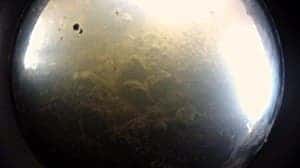Underneath hundreds of meters of Antarctic ice lie a slew of lakes, completely isolated from the outside world, some for thousand of years. For years, scientists have been trying to imagine what life in such a system might look like, if any. Just recently an US Antarctic expedition found a small body of water huddled in eternal darkness beneath 800-metre-thick that they claim harbors life.

ALBERTO BEHAR, JPL/ASU
If this preliminary claim holds up, then this is indeed a monumental find. Sealed away from absolutely anything, in such bodies of water encapsulated in ice for millions of years potentially present organisms living in such inhospitable conditions are deprived of oxygen and nutrients – essential ingredients for metabolizing energy, and as such for harboring life. This is why many scientists claim that life can not exist in such places, yet this latest find contradicts this idea.
So far, we don’t know how many of the microbes discovered in sediments and water by the US Antarctic expedition team WISSARD from the lake are new or known. Also, there’s always the possibility that the microbes, which have yet to undergo thorough DNA analysis, are actually contaminants from the team’s drill, despite the precautions they’ve made.
Earlier, another team of international researchers drilled through a whooping 4km of ice to reach the vast Lake Vostok — the largest and best known of Antarctica’s roughly 300 subglacial lakes. However, no signs of life were found in samples extracted from the location, thus far.
If the microbial life found by the WISSARD team at Lake Whillans (the subglacial lake in question) is indeed found to be native, then hopes astronomers and astrobiologists have today of finding life in rather similar places in the solar system, like under the thick ice sheet of Jupiter’s icy moon Europa would skyrocket. Europa has a warm ocean of water beneath 62 miles of ice sheet, but also similar to Antarctica, it is riddled with a myriad of subglacial lakes. Also, seeing how there’s no oxygen or nutrients, it will be interesting to find out how the microbes got their energy from. Some researchers believe the bacteria might live on energy extracted from minerals in surrounding rocks, a survival strategy also used by certain bacteria found in gold mines.
“The data and samples collected have provided us with a glimpse of the Antarctic subglacial world,” the team wrote before they left their icy field site. “We have no doubts that our results will transform the way we view Antarctica and pave the way for future national and international subglacial research efforts.”
This is definitely extraordinary news. ZME Science will keep you posted on further development.
via Nature News






